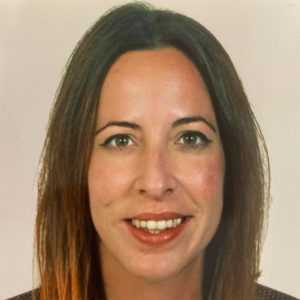
Dr. Rocio Calderon is a Postdoctoral Research Associate at Cornell University. Her main research interests are related to the application of remote sensing for vegetation stress detection and plant disease surveillance from regional to global scale by its incorporation on epidemiological and atmospheric modeling tools.
Soilborne plant diseases diminish food supplies globally and remove land from agricultural production by producing long lasting spores that can survive in soils for up to 20 years. Preserving existing agroecosystems from them is critical to conserving biodiversity in natural ecosystems, as thus the long-term ecological health of our planet. The use of remote sensing offers the opportunity to detect and predict pathogen dispersal at regional scales. Challenging this promising use case is the vast divide between plant pathology and remote sensing disciplines. Our NASA-ROSES Interdisciplinary Sciences funded project bridges this gap by integrating remote sensing, earth system modeling, aerosol transport modeling and comparative genomics to lay the foundation for a global crop disease surveillance system for the economically devastating soilborne disease, Fusarium wilt (FW). In order to identify current agricultural production zones with susceptible crops arid enough to serve as dust sources based on known FW epidemiology, we have developed a susceptibility assessment using satellite and derived products that integrates for the first time all three aspects of the disease triangle: host, pathogen and environment. These arid regions were built using the MODIS deep blue algorithm and overlapped with agricultural production zones using the recent GlobalCover 2020 product from ESA. We spatially restricted our assessment to areas with known FW, built and uploaded a global incidence geodatabase online through an interactive web map. Conducive plant disease environments using satellite data products (e.g., SMAP, GPM, MODIS, ECOSTRESS) within species distribution models were built using this geodatabase. Moreover, the Community Atmospheric Model was parameterized to simulate the 2020 dust event from North Africa which moved aerial dust particles as far as the US. Sensitivity tests were conducted to include pathogen spore traits that influence dispersal (e.g., spore diameter, density, temperature and pressure tolerance). This integrated approach will provide key insights into how global dust currents facilitate the transport and spread of soilborne fungi while increasing our knowledge of the capacity for remote sensing and earth system modeling to detect, quantify and inform risk of biotic stress in agroecosystems.
Financial support from NASA-ROSES Interdisciplinary Sciences #80NSSC20K1533 is gratefully acknowledged. Co-authors for this work are H. Brodsky, J. Eller, N. Mahowald and K. M. Gold from Cornell University, A. Milles and S. Crandall from Penn State University and R. Pavlick from Jet Propulsion Laboratory.